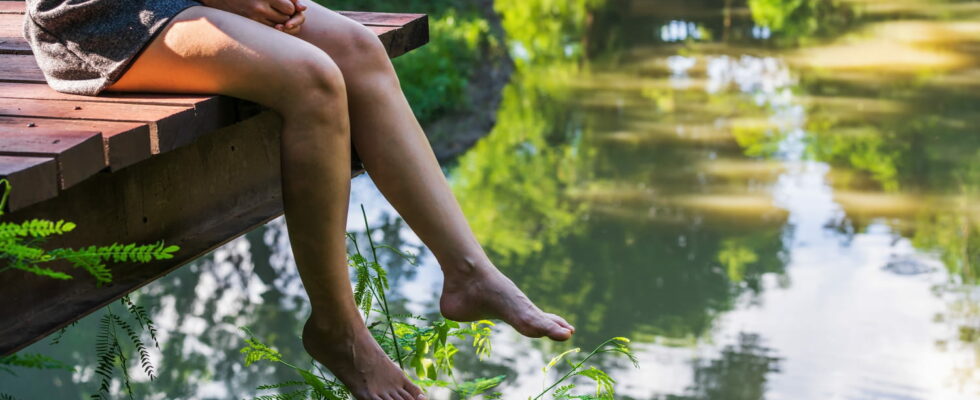“People who bathe in natural water are exposed to different types of risks.”
During a holiday in the mountains, in the countryside or to cool off while walking, you may be led to swim in a body of water. In France, swimming in a natural environment, i.e. in a pond, lake or river, is possible, but you should know that anyone who swims there may be exposed to risks, often without knowing it.
“People who bathe in natural water can expose themselves to different types of risks” explains Jean-François Humbert, research director at INRAE (National Institute for Agricultural Research). “First of all, in natural areas that are not subject to regulatory surveillance, the main risk concerns drowning. 23% of accidental drownings occur in rivers or bodies of water according to Public Health France.” Bathers are also exposed to health risks. In fresh water, the most common risks are:
► Fecal contamination, i.e. contamination of water by bacteria from the digestive tract of mammals. This concerns the bacteria Escherichia coli and enterococci. If these bacteria are not visible to the naked eye, “their presence in lakes can increase following a storm for example, when the water becomes cloudy”.
► Cyanobacteria which are microorganisms that develop in certain lakes in summer. “They can be recognized quite easily, because these proliferations give a very green color to the water and frequently form accumulations of cells on the surface in the form of almost fluorescent green streaks,” says Jean-François Humbert. Cyanobacteria produce various toxins that can target the liver and nervous system. “These neurotoxins are responsible for the death of dogs in the region every year, following swimming in rivers or lakes.” adds the expert. In humans, fecal bacteria and cyanobacteria most often cause gastroenteritis and skin irritations that are not fatal but can ruin part of the vacation.
Other less frequent risks exist such as the risk of leptospirosis (a bacteria transmitted by rodents), which can sometimes be very serious. There is also a risk of swimmer’s dermatitis due to a parasite of ducks and which causes severe itching. Finally, the risk linked to the presence of amoebas which only concerns warm waters (temperatures between 27 and 45 °C) and which was responsible for fatal encephalitis in a child in Guadeloupe in 2008. This extraordinary case, the first in France, was caused by the inhalation of the amoeba Naegleria fowleri via the nasal mucosa.
Safe swimming
“To swim safely in a lake or river, you should use supervised swimming areas for which a swimming profile has been established.”explains our expert. These bathing profiles make it possible to identify potential risks in a bathing area and to define their monitoring rules. It is the municipalities in particular that will request administrative authorizations. These places benefit from a clear display informing bathers of the quality of the water. The bathing area is also demarcated in the water using buoys. If the bathing area is open, this means that there is no health risk. “All swimming should take place within this supervised framework, but we know very well that in fresh water, there is swimming outside these areas.” If it is not a supervised swimming area with lifeguards and facilities, it means that the water quality is not guaranteed. Caution is advised.
We don’t always know it, but it is possible to find out in real time the quality of bathing water at the holiday destination thanks to the government website swimming.health.gouv.fr. In France, the water in bathing sites is checked at least once a month by government services. Simply enter your department to find your bathing site and the associated analysis result: site with excellent water quality; site with good water quality; site with sufficient water quality; site with insufficient water quality; site with insufficient water quality this season to be classified; unclassified site; site with a temporary ban on bathing.
Certain actions when swimming in natural waters also limit the risks of contamination, such as avoiding drinking from a cup, putting your head under water and showering immediately after swimming. Children must be given special attention. They are more likely to be exposed to the risks associated with the presence of bacteria because they ingest much larger quantities of water than adults, in proportion to their body weight.
Thanks to Jean-François Humbert, INRAE research director.
